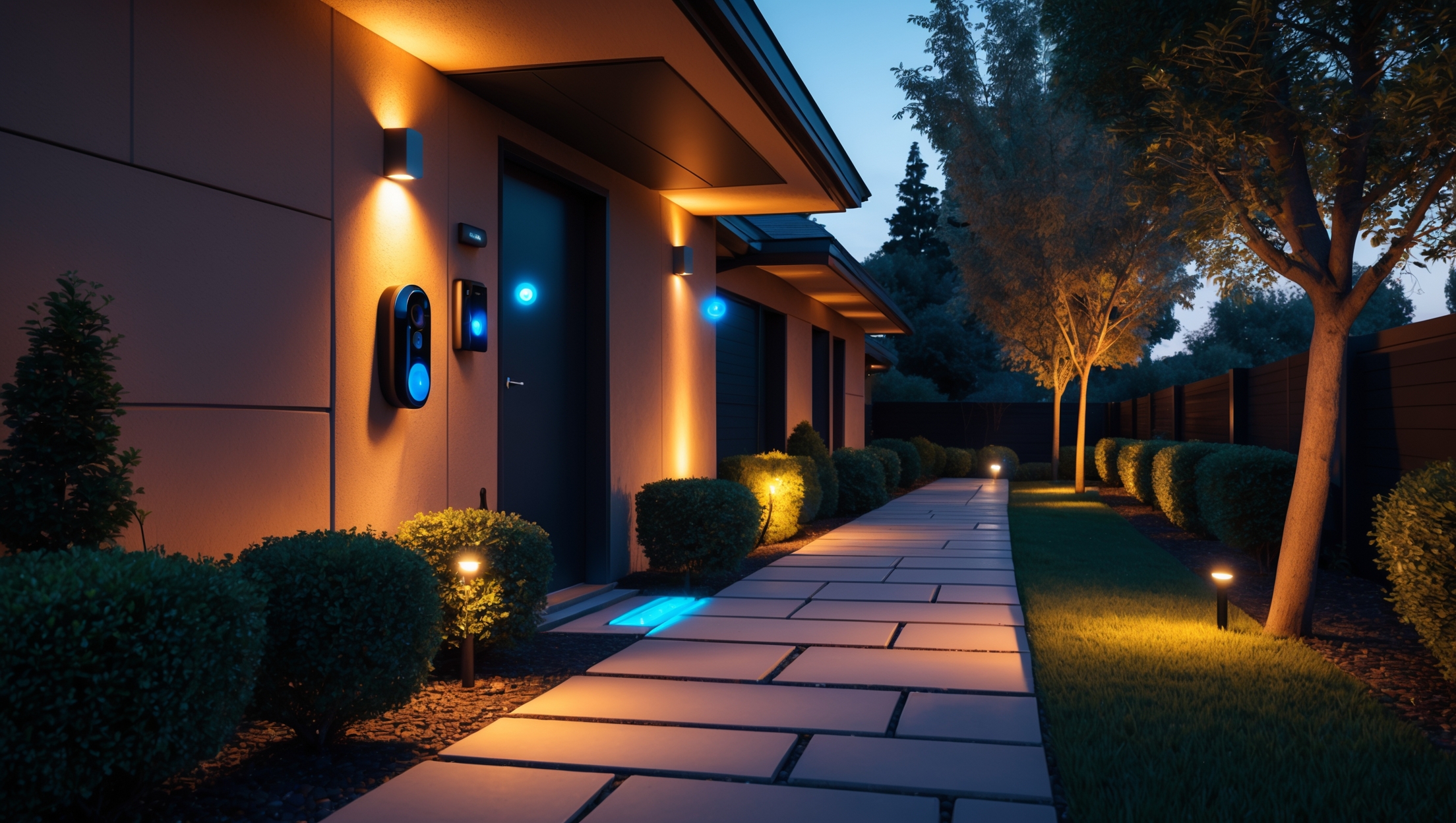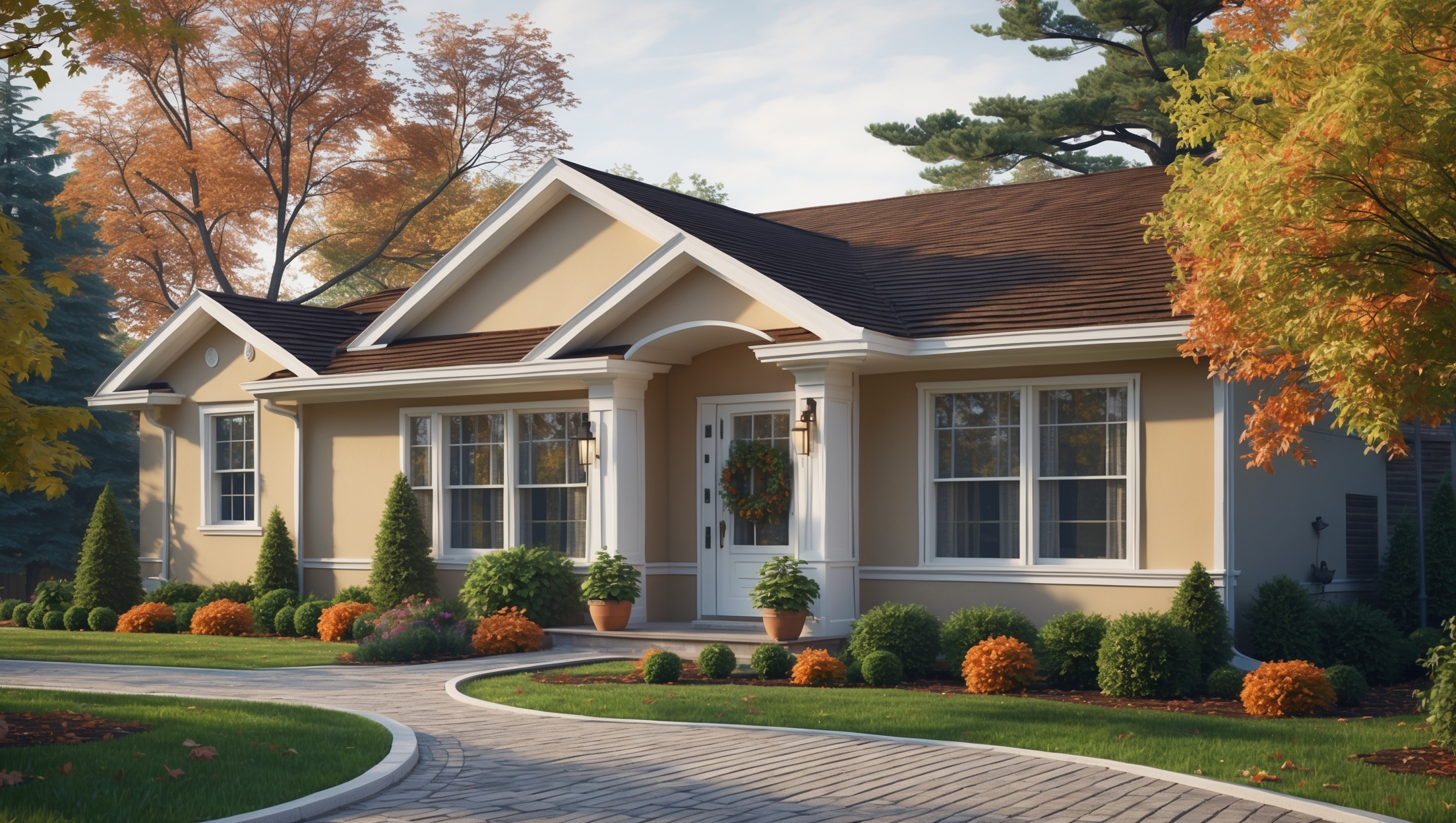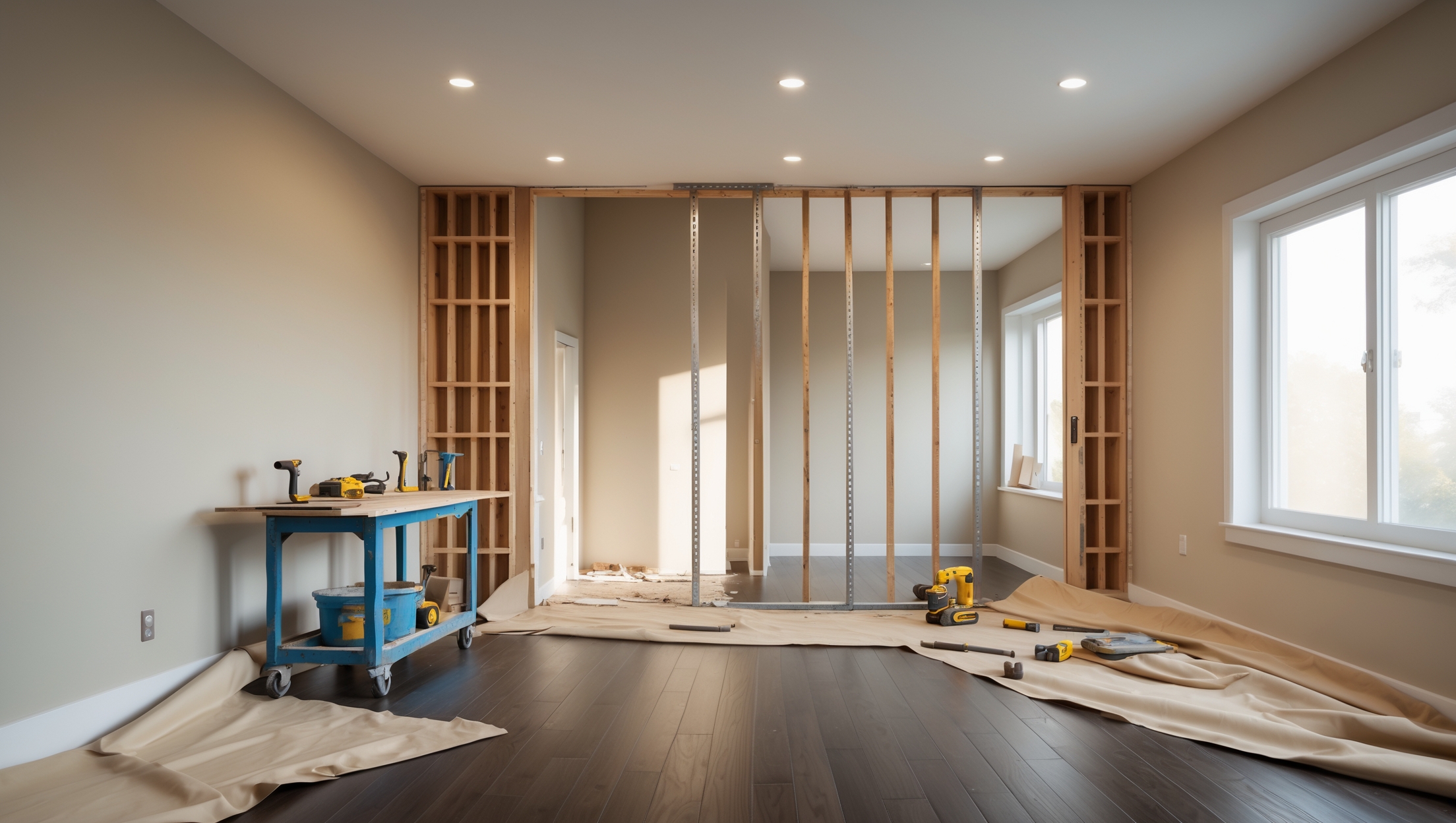Introduction: Why Home Security Is a Smart Home Improvement
Home improvement often focuses on aesthetics, comfort, and energy efficiency, but security is just as crucial. With burglary and property crime rates still a concern in many neighborhoods, investing in a modern home security system is one of the most practical upgrades you can make. A well-designed system not only protects your belongings but also provides peace of mind for you and your family. However, navigating the world of home security can be confusing: from DIY kits to full-service professional installations, from basic alarms to smart monitoring and automation, the choices (and costs) can be overwhelming. In this guide, we’ll break down the costs, explain essential features, compare DIY and professional options, and help you avoid common pitfalls, so you can make an informed decision that fits your needs and your budget.
Understanding Modern Home Security Systems
What Makes Up a Home Security System?
A home security system is more than just a loud alarm. Today’s systems combine a variety of components to deter, detect, and respond to threats. Here are the usual building blocks:
- Control Panel or Base Station: The brains of the system, managing sensors and communication.
- Door and Window Sensors: Detect unauthorized opening.
- Motion Detectors: Identify movement inside or outside.
- Glass Break Sensors: Trigger alarms when glass is shattered.
- Security Cameras: Provide live and recorded video of key areas.
- Alarm Sirens: Audible deterrent to scare off intruders.
- Keypads and Fobs: Arm/disarm and control access.
- Smart Locks: Integrate with the system for secure entry.
- Yard Signs and Window Stickers: Visual deterrents that signal your home is protected.
Optional upgrades include environmental sensors (smoke, CO, water leak), smart home integration (lighting, thermostats), and professional monitoring.
Types of Home Security Systems
- DIY Systems: Designed for self-installation, often wireless and modular, such as SimpliSafe, Ring Alarm, or Abode.
- Professionally Installed Systems: Installed by experts, typically with in-person consultation and robust customer support, such as ADT or Vivint.
Cost Breakdown: What Should You Expect to Pay?
Initial Equipment Costs
Equipment costs vary widely depending on your home’s size, the number of entry points, and the features you choose. Here’s a practical breakdown:
- Basic DIY Kit (suitable for apartments/small homes): $150–$400
- Mid-Range DIY System (3+ bedrooms, cameras): $400–$800
- Full-Featured DIY System (multiple cameras, smart home integration): $800–$1,500
- Professional System (starter package): $600–$1,200 (often requires contract)
- Professional System (fully customized, large home): $1,500–$3,000+
Installation Costs
- DIY Installation: $0 (your time and tools), though some may prefer to pay a handyman ($100–$300)
- Professional Installation: $99–$500 depending on system complexity and provider
Monitoring and Ongoing Fees
- Self-Monitoring (DIY): $0 (mobile alerts only) to $10/month (cloud video storage)
- Professional Monitoring (DIY or Pro): $15–$60/month
- Cellular Backup (recommended): Often included in higher monitoring tiers; standalone $5–$10/month
Hidden and Optional Costs
- Permits: Some municipalities require a security alarm permit ($20–$100/year)
- Upgrades and Expansions: Additional sensors or cameras ($30–$200 per device)
- Maintenance: Occasional battery replacement ($5–$30/year)
- Early Termination Fees: If you break a professional monitoring contract ($200–$1,000+)
Key Features: What Really Matters in a Home Security System?
Must-Have Features
- Reliable Entry Sensors: Cover all doors and accessible windows.
- Motion Detectors: At least one per main floor and basement.
- Loud Siren: Audible inside and outside to deter intruders.
- Backup Power: Battery backup for at least 24 hours.
- Cellular Backup: Maintains protection if internet or phone lines are cut.
- Mobile Alerts: Real-time notifications to your phone.
Recommended Upgrades
- Outdoor Cameras: Cover entryways, driveways, and backyards.
- Video Doorbell: See and speak to visitors from your phone.
- Smart Home Integration: Link lights, locks, and thermostats for automation and security.
- Environmental Sensors: Add smoke, carbon monoxide, and water leak detectors for all-around protection.
Nice-to-Have Features
- Glass Break Sensors: Extra layer for rooms with large windows.
- Panic Buttons: For vulnerable family members.
- Remote Key Fobs: Convenient arming/disarming.
- Smart Garage Door Integration: Secure this common entry point.
DIY vs. Professional Installation: Which Is Right for You?
DIY Security Systems: Advantages and Limitations
- Pros:
- Lower initial and ongoing costs
- Flexible, modular systems that grow with your needs
- No long-term contracts required
- Easy relocation if you move
- Cons:
- Requires time, basic tools, and comfort with technology
- Support is online or phone-based (not in-person)
- Some advanced integrations may be tricky
- Professional monitoring may be optional or less robust
Professional Installation: Advantages and Limitations
- Pros:
- Expert assessment of your home’s vulnerabilities
- Custom system design and seamless installation
- 24/7 professional monitoring included
- In-person support and maintenance
- Cons:
- Higher upfront and monthly costs
- Usually requires a contract (1–5 years)
- Harder to move the system if you relocate
- Upgrades and changes may require a service call
How to Decide
If you’re comfortable with basic DIY and want to save money, a quality DIY system is likely sufficient for most homes. If you want hands-off customization, robust monitoring, or have a complex property, professional installation is a solid investment. For many, a hybrid approach (DIY equipment + professional monitoring) offers the best of both worlds.
Step-by-Step Guide: Setting Up a DIY Home Security System
Planning Your System
- Walk around your home and list all entry points.
- Decide on camera coverage (front door, driveway, backyard).
- Map out where to place the control panel and sensors for easy access and coverage.
Unboxing and Testing
- Unpack all devices and check for damage.
- Test each sensor and camera before mounting (most systems have a test mode).
- Download the manufacturer’s app and connect the control panel to WiFi.
Installation
- Mount the control panel near the main entrance but out of direct line of sight from windows.
- Install door/window sensors on every exterior door and vulnerable window (ground floor, basement, easily accessible second-floor windows).
- Place motion detectors in main hallways, living rooms, and areas with multiple entry points. Avoid pointing toward windows or heat sources.
- Mount cameras high enough to avoid tampering, angled to cover doors and driveways. Test the field of view via the app.
- Set up sirens in central locations for maximum audibility.
Setup and Customization
- Customize settings in the app: entry/exit delays, notification preferences, and user codes.
- Integrate with smart home devices if desired (lights, locks, thermostats).
- Test the full system, including arming/disarming, triggering sensors, and checking video feeds.
Ongoing Maintenance
- Test the system monthly (most apps offer a self-test feature).
- Replace batteries as needed (usually every 1–2 years).
- Update firmware/software to patch vulnerabilities.
Common Mistakes to Avoid
- Ignoring Entry Points: Failing to secure basement doors, garage doors, or accessible second-story windows.
- Improper Camera Placement: Mounting cameras too low (vulnerable to tampering) or too high (poor detail).
- Skipping Permits: Not checking local requirements can result in fines or delayed police response.
- Relying Solely on WiFi: No cellular backup means loss of protection during power or internet outages.
- Poor System Testing: Not regularly testing sensors and alarms can leave you exposed.
- Neglecting Privacy Settings: Failing to secure your video feeds can lead to hacking risks.
Compliance, Permits, and Insurance Considerations
Permits and Local Regulations
Many cities require homeowners to register alarm systems, especially those with professional monitoring. Fines for false alarms or unregistered systems can be significant—always check your local municipality’s website for requirements before activating your system.
Insurance Benefits and Requirements
A professionally monitored security system can often earn you a discount on your homeowner’s insurance—typically 5–15%. Some insurance providers require proof of monitoring or specific features (like fire/smoke detection) for the discount. Always notify your insurer after installation and provide documentation.
Privacy and Data Security
Choose reputable brands that offer encrypted video feeds, two-factor authentication, and strong data privacy policies. Review user permissions and periodically update passwords to keep your system secure.
Maintenance Best Practices for Long-Term Reliability
- Test the alarm system monthly and after any major updates.
- Clean camera lenses and sensors regularly to maintain clear visuals and accurate detection.
- Keep firmware and apps up to date to protect against vulnerabilities.
- Replace batteries promptly when notified by the system.
- Review camera angles and coverage as landscaping or outdoor features change.
- Update user codes and permissions if household members change.
Conclusion: Making the Right Home Security Investment
Upgrading your home with a modern security system is one of the most impactful improvements you can make, offering both practical protection and invaluable peace of mind. By understanding the true costs—equipment, installation, monitoring, and maintenance—you’ll avoid unpleasant surprises and ensure your investment fits your budget. Carefully consider which features are essential for your home’s layout and your family’s lifestyle, and weigh the pros and cons of DIY versus professional installation. Remember that a security system isn’t just about gadgets; it’s about creating a safer, smarter, and more resilient living space. Don’t forget to comply with local regulations, maintain your system, and update your insurance provider to maximize your benefits.
Ultimately, the right security system is the one that you’ll use consistently and confidently. Whether you opt for a DIY kit or a custom professional install, taking these steps will help protect your home—and the people and memories inside it—for years to come.




